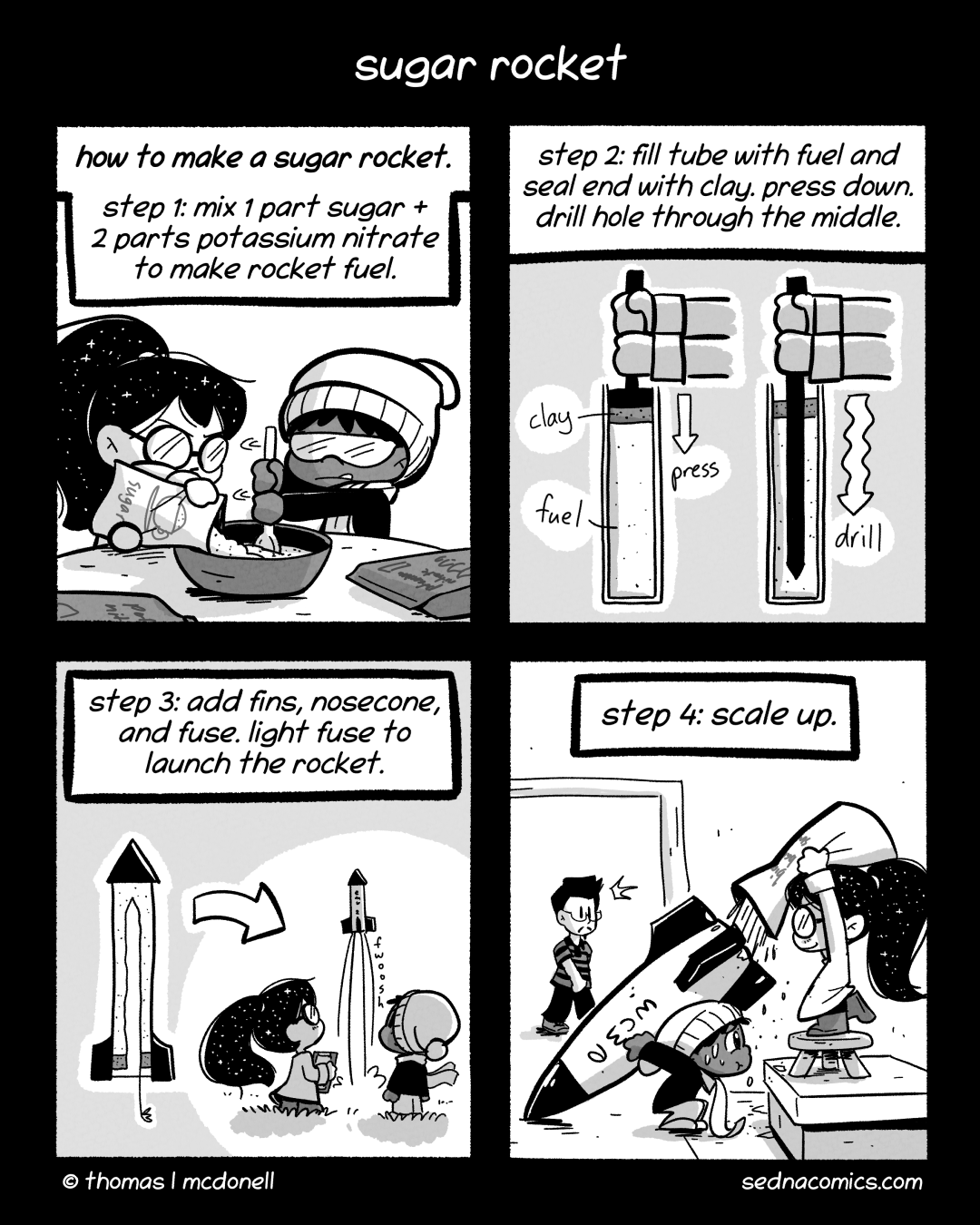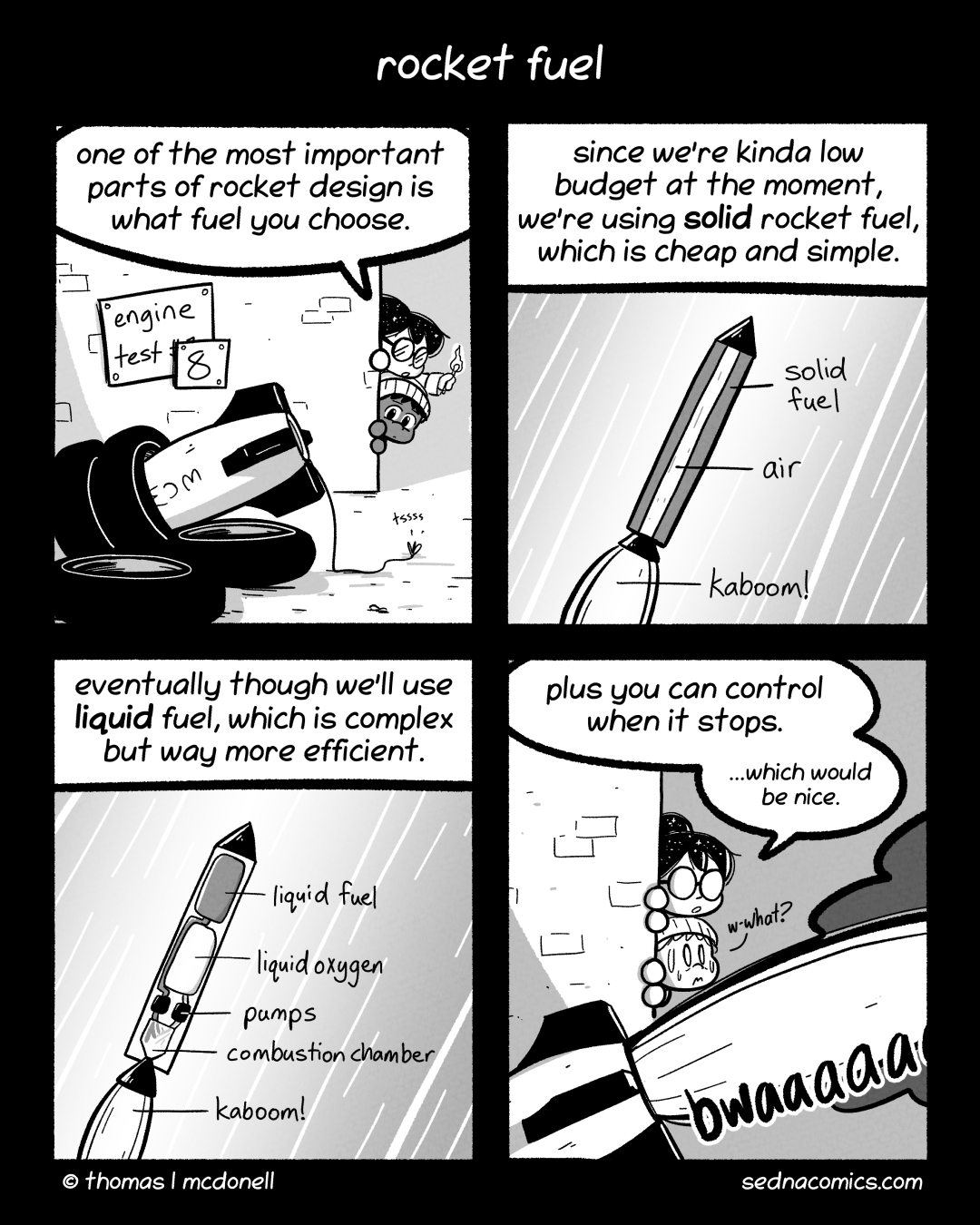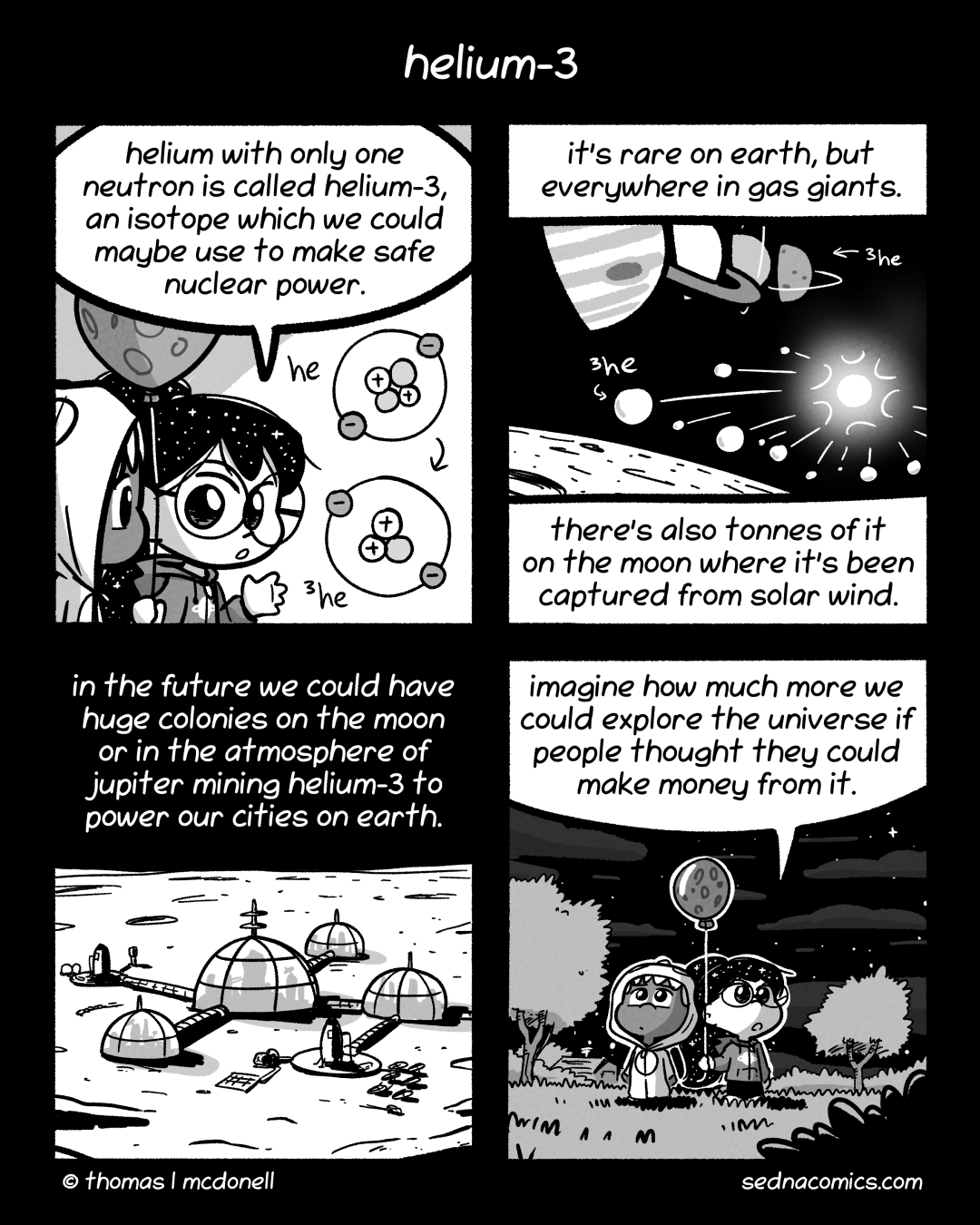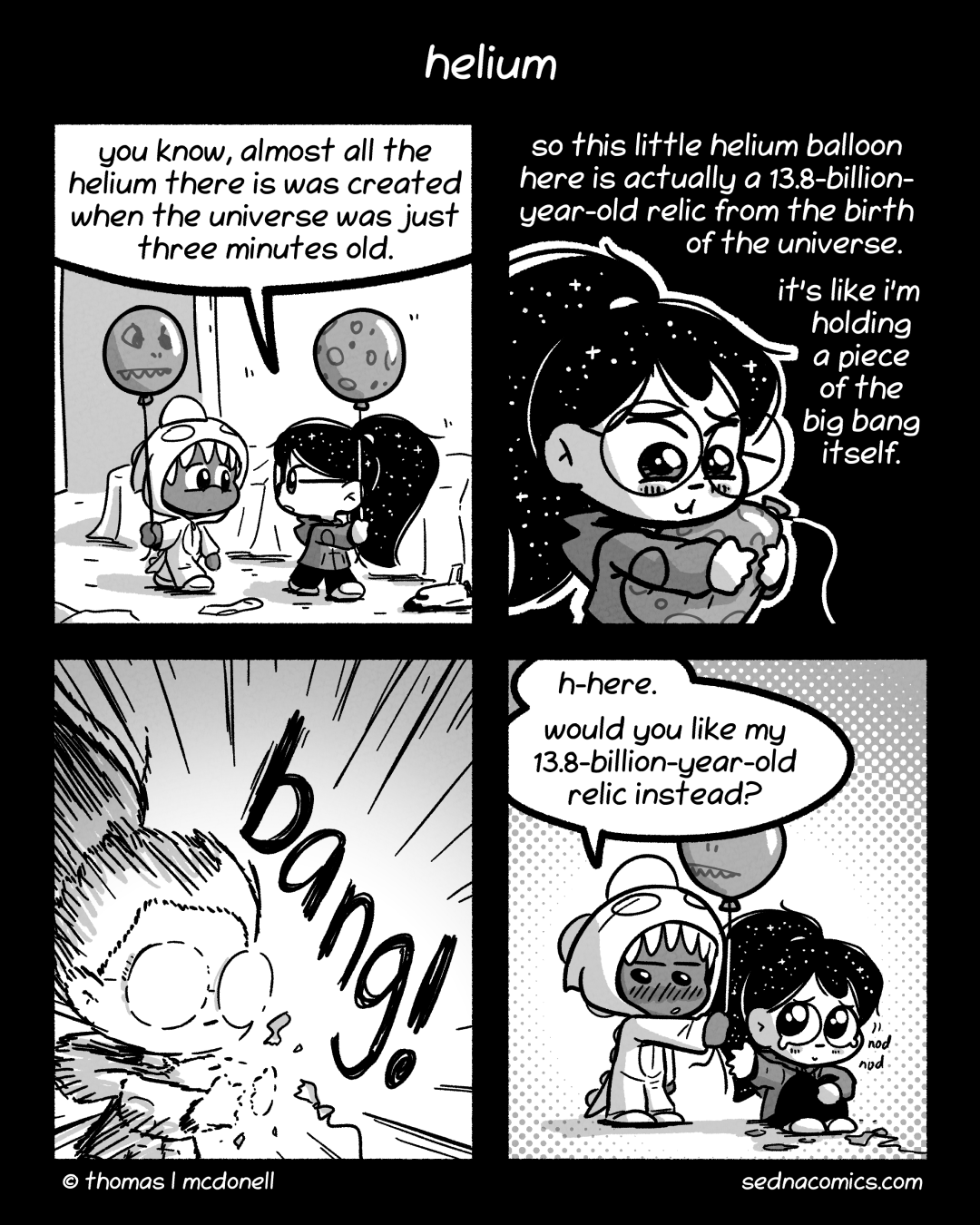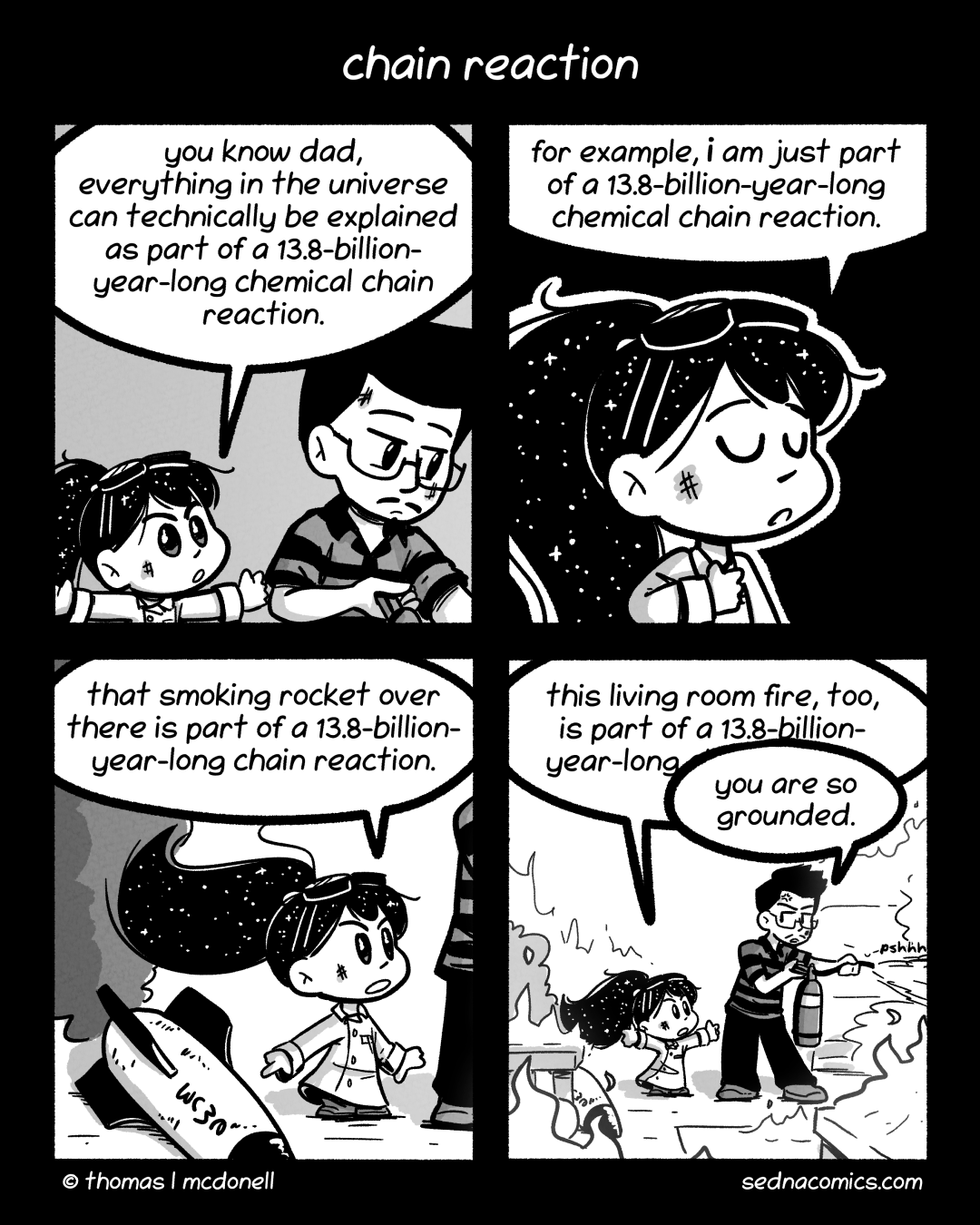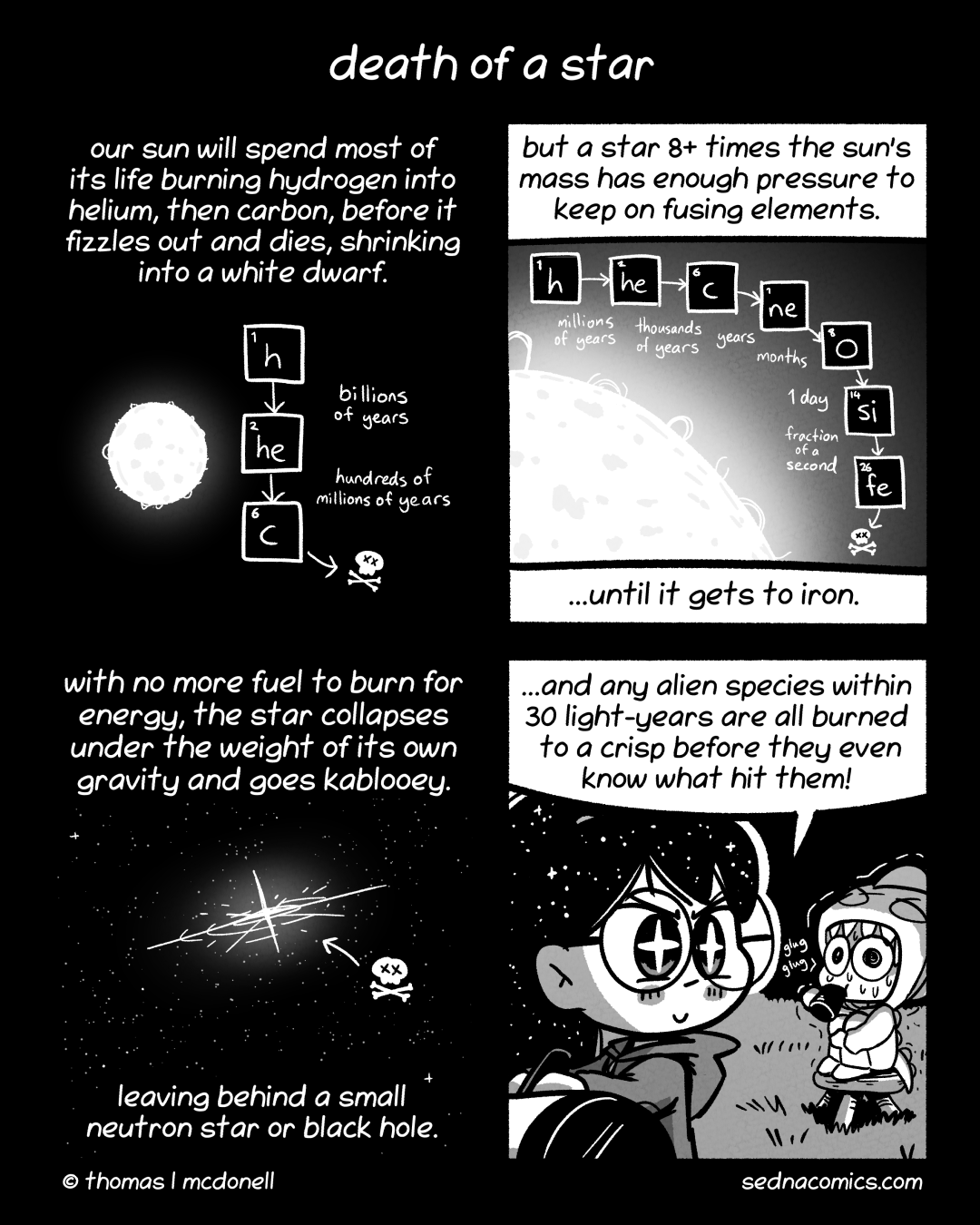yes, you can make a rocket with nothing more than table sugar and fertiliser. makes sense if you think about it. sugar has a lot of energy, and potassium nitrate has oxygen, which are the main two ingredients you need for a big boom.
if you want to try this at home, maybe consider looking up some more detailed instructions online. don’t get your pyrotechnical advice from a comic strip, kids.

